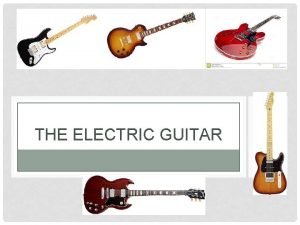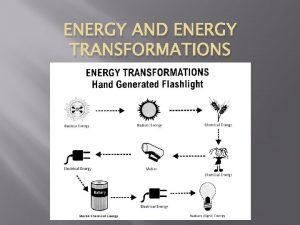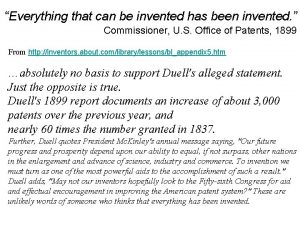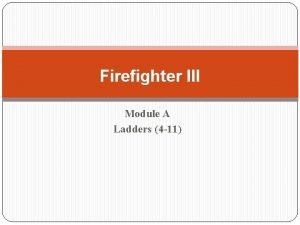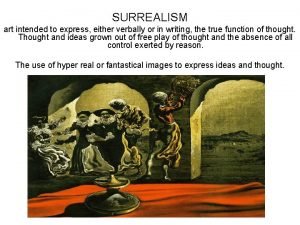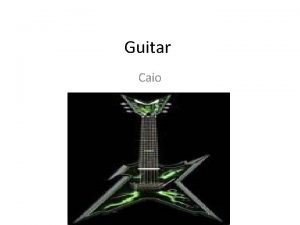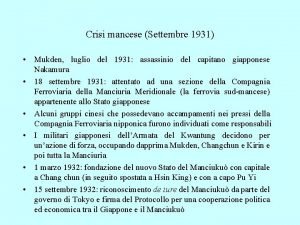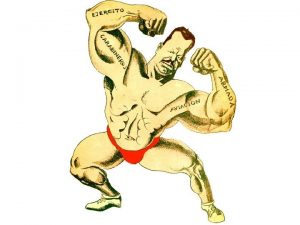THE ELECTRIC GUITAR HISTORY Invented in 1931 the



















- Slides: 19

THE ELECTRIC GUITAR

HISTORY Invented in 1931, the amplified electric guitar was adopted by jazz guitarists, who sought to be able to be heard in large big band ensembles. Early proponents of the electric guitar on record included Les Paul, Lonnie Johnson, Sister Rosetta Tharpe, T-Bone Walker, and Charlie Christian. During the 1950 s and 1960 s, the electric guitar became the most important instrument in pop music. It has evolved into an instrument that is capable of a multitude of sounds and styles. It served as a major component in the development of electric blues, rock and roll, rock music, and many other genres of music.

THE FENDER STRATOCASTER

THE GIBSON LES PAUL

THE FENDER TELECASTER

EARLY ELECTRIC GUITARS -Many experiments at electrically amplifying the vibrations from early 20 th century -Telephone transmitters adapted and placed inside violins and banjos to amplify the sound from 1910 s. -1920 s: use of carbon button microphones attached to the bridge (weak signal) -Many claimants to have been the first to invent an electric guitar. -Earliest electric guitars adapted hollow-bodied acoustic instruments with tungsten pickups. -First electrically amplified guitar was designed in 1931 by George Beauchamp. -“Frying pan" was built by Harry Watson, factory superintendent of the National Guitar Corporation -Fender Telecaster: Frist commercially successful solid body electric guitar (1950). Preceded by less successful Broadcaster and Esquire -Gibson Les Paul designed in 1952, released with humbucker pickups in 1957 -1954: Fender Stratocaster featured 3 pickups, a spring tremolo, and a contoured body shape

STRINGS “String-Through Body” The strings pass over the bridge saddles, then through holes through the top of the guitar body to the back. The strings are typically anchored in place at the back of the guitar by metal ferrules.

PICKUPS Pickups are transducers that “pick up” an electric current produced when the strings are struck.

TYPES OF PICKUPS Active Versus Passive Pickups • Single Coil: • • • The first pickup design ‘Frying Pan’ was the first to feature single coil pickup The characteristic tone of a single-coil pickup is bright and cutting • P 90: • • Single coil pickup, but one with a wide coil. Increases the area of the strings that the pickup ‘hears’, Bigger sound, that is less bright than a typical single coil It was introduced by Gibson • Humbucker: • • Double coil pickups Reduces or counters the unwanted ambient hum sounds - The vast majority of well-known guitar models (Teles, Strats, Les Pauls, SGs etc. ) have passive pickups. - Active pickups first appeared for bassists - Used an active, battery-powered circuit to produce a powerful output, with balanced tone across the frequency range - 1970 s, Jazz guitarists adapted this technology for the guitar for the same reasons - More balanced, “clean” tone - Allowed rock players to drive amps and distortions even harder

ELECTRIC GUITAR COMPANIES

AMPS • Electronic speakers that read the signal produced by the electric guitar • Many different styles and models of amplifiers. • Separated by power (watts), design and brand. • Common quality amp brands include Fender, Marshall, Mesa, Line 6, and many more.

TYPES OF AMPS • Head and cabinet: • Two parts • Had contains the pre-amp • Plugs into a cabinet (speaker) • Solid State: • Most inexpensive • Based on semiconductor (solid-state) circuits • Some designs incorporate tubes in the preamp stage. • Much cheaper to produce and more reliable • Much lighter than tube amplifiers. • Tube amps: • Also called a valve amplifier • Uses vacuum tubes to increase the amplitude or power of a signal. • Hybrid Amps: • Involves one of two combinations of tube and solid-state amplification • May have a tube power amp fed by a solid-state pre-amp circuit

LES PAUL One of the innovators and inventors of the electric guitar, Les Paul was known for his virtuosity and sweeps. Gibson’s signature guitar was named for him. He was also the inventor of multitrack recording

B. B. KING BB King was a blues guitarist and singer. He was known for his string bending and vibrato in his improvised solos. He played a custom Gibson guitar which he named “Lucille. ”

JIMI HENDRIX Jimi Hendrix was a rock musician in the 1960 s. He was known for his psychadelic style, loud, raw sound, and wild stage performances. He primarily played a Fender Stratocaster

ERIC CLAPTON Eric Clapton is, perhaps, the greatest living guitarist. He is known for his unique blues -rock style. He was a member of the Yardbirds and supergoup Cream in the 1960 s. He mostly plays on a Fender Stratocaster.

JIMMY PAGE Jimmy Page was the guitarist for the legendary Led Zeppelin. He had an incredibly distinct tone and was known for creating unusual sounds by turning the tuning keys during solos and playing with a cello bow. He played a Gibson Les Paul and is also known for playing an a double-neck guitar

TONY IOMMI Essentially credited with creating the “heavy metal” sound with the band Black Sabbath, Tony Iommi was known for his very deep tone. This is partially the result of a factory accident in which he lost his finger tips. In order to use his prosthetics he had to lower his guitar tuning. He primarily played on a Gibson SG.

JOHNNY RAMONE Less is more! Johnny Ramone was the guitarist for punk rock band The Ramones. He literally refused to play solos, as the band lived by the motto “all killer, no filler. ” He played on a Mosrite guitar.
 Electric guitar history
Electric guitar history Yoyo energy transformation
Yoyo energy transformation Identify the energy transformations that occur in a guitar
Identify the energy transformations that occur in a guitar Energy transformation of plucking a guitar
Energy transformation of plucking a guitar Everything that can be invented has been invented
Everything that can be invented has been invented Everything has been invented
Everything has been invented History of cigar box guitars
History of cigar box guitars Nuemberg laws
Nuemberg laws Growth of the japanese empire, 1931–41
Growth of the japanese empire, 1931–41 A world in flames, 1931-1941
A world in flames, 1931-1941 Why did isolationist want these laws passed
Why did isolationist want these laws passed Picasso dod
Picasso dod Fonograaf
Fonograaf Nfpa 1931
Nfpa 1931 Charles sheeler, classic landscape, 1931.
Charles sheeler, classic landscape, 1931. Marius (1931)
Marius (1931) De stijl 1917-1931
De stijl 1917-1931 Indian flag in 1931
Indian flag in 1931 The persistence of memory 1931
The persistence of memory 1931 Gobiernos militares de el salvador 1931 a 1979
Gobiernos militares de el salvador 1931 a 1979
